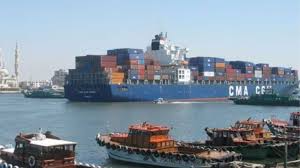Indian negotiators extend US stay in attempt to seal an interim trade deal

India has extended its trade negotiations in the United States, hoping to secure an interim trade agreement before a key July 9 deadline. This move highlights the growing urgency to avoid steep tariff hikes and preserve economic momentum between the two nations.
Originally, the Indian delegation was set to wrap up discussions by June 27. Instead, they chose to remain in Washington through early July. Their objective is clear: resolve final issues and complete a limited agreement that would keep tariffs suspended and support future trade cooperation.
Why India and the US Want a Deal Now
In 2023, both countries agreed to pause additional tariffs on select goods. That temporary relief expires on July 9, 2025. If no agreement is reached by then, the United States could reimpose duties of up to 26% on certain Indian exports. India may respond with its own countermeasures.
Avoiding these tariff increases is not the only motivation. Both governments want to strengthen trade ties and prepare for a larger agreement by the end of 2025. With global supply chains shifting and tensions rising in other regions, a stable India–US partnership is more important than ever.
Progress Across Several Sectors
Negotiators have made notable progress in several areas. India seeks reduced US tariffs on exports such as garments, engineering goods, and jewelry. In return, it is ready to offer better access to American goods in sectors like electronics, medical devices, and tech services.
The United States also hopes to expand its energy exports to India, particularly liquefied natural gas (LNG). Trade officials have also discussed deeper cooperation in semiconductors, clean energy, and digital infrastructure.
Meanwhile, business leaders on both sides have pushed for faster resolution. Many warn that uncertainty over tariffs makes it harder to plan investments or supply chain moves.
Agriculture: The Sticking Point
Despite progress, agriculture remains the biggest challenge. India has made it clear that it will not compromise on food security or the livelihoods of its farmers. Products like dairy, genetically modified crops, and poultry have triggered serious debate.
According to a senior Indian official, “We cannot allow foreign imports to harm small farmers or lower our food safety standards.” These concerns have blocked previous attempts at finalizing broader trade deals.
The United States, however, argues that some of India’s rules—especially in dairy and GM foods—act as unfair barriers. American negotiators want greater access to India’s growing food and agriculture markets.
To break the deadlock, both sides are considering creative solutions. These include quotas, phased openings, or exemptions for sensitive goods. While no final agreement exists yet, negotiators believe a balanced approach is still possible.
Timing Is Everything
The timing of these talks carries special weight. The US is heading into its presidential election season. With former President Donald Trump pushing protectionist trade policies again, American officials want to lock in gains now.
India, meanwhile, aims to expand its global economic influence. It has taken a leadership role in global groups like the G20 and the Indo-Pacific Economic Framework (IPEF). Securing even a partial deal with the US would support that image and open more doors for Indian exporters.
If the interim deal succeeds, it could act as a bridge to a more ambitious trade agreement expected later this year. However, failure could trigger tariff hikes and strain the diplomatic relationship.
What’s at Risk?
Without a deal by July 9, both countries will likely reinstate higher tariffs. This move would hurt industries and increase prices for consumers.
Indian exporters, especially those in textiles and engineering, fear losing competitiveness in the US market. On the other hand, American businesses don’t want to lose access to India’s massive consumer base. That’s especially true for energy companies, tech firms, and healthcare providers.
The wider concern is geopolitical. If India and the US cannot align on trade, it may create space for rivals like China to expand their economic influence.
Can Diplomacy Deliver?
The extended talks in Washington suggest both governments still believe a deal is possible. While agriculture remains a challenge, negotiators appear willing to work through smaller wins first.
Even a limited agreement—covering tariffs, energy, and technology—would represent major progress. It would allow both sides to claim victory and return to the table for a larger agreement in the coming months.
Experts believe the most likely outcome is a narrowly scoped deal focused on non-sensitive sectors. This would preserve tariff relief, strengthen investor confidence, and send a strong message to the global market.
Final Thoughts
India’s decision to prolong trade discussions in the US signals how serious both nations are about strengthening ties. With only days left before the tariff freeze expires, negotiators are working around the clock to finalize a deal that balances economic opportunity with political reality.
If successful, this interim agreement could serve as a launchpad for a deeper, long-term trade partnership between the two nations—one that could shape the future of trade across the Indo-Pacific.






